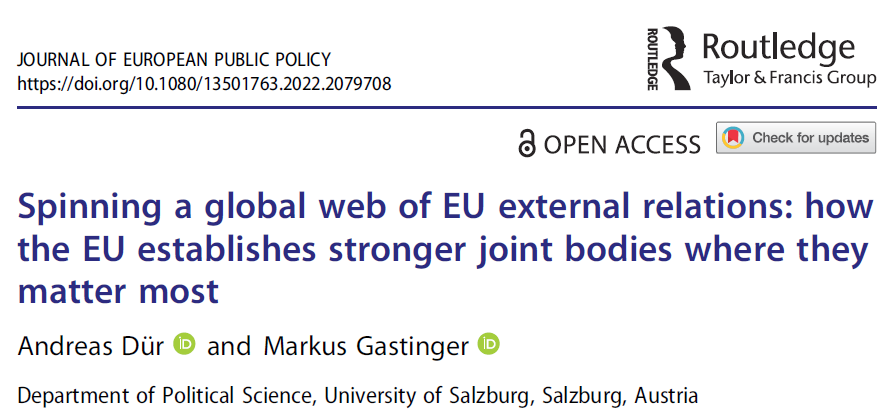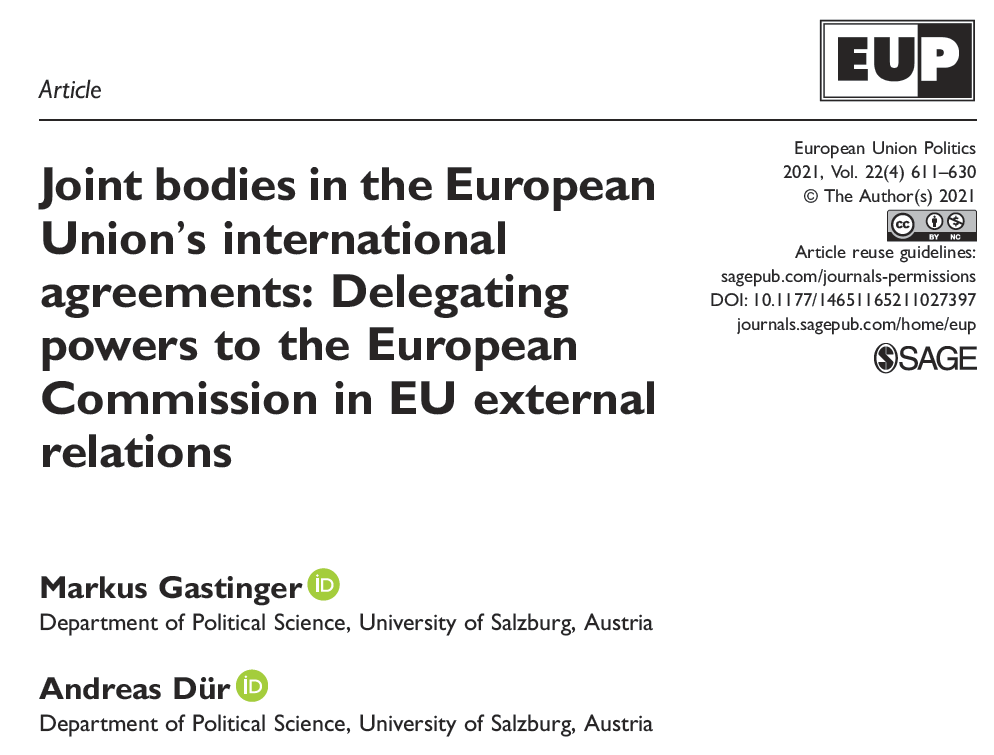On this page I collect information about “Joint Bodies” (JBs), based in large part on my Marie Skłodowska-Curie Fellowship running from 2019–2022. The page will be continuously expanded. Hence, feel free to bookmark it and come back later to learn more about joint bodies. If you are pressed for time, you can find a short executive summary here.
What’s on this page?
Introduction
Joint bodies are essentially administrative institutions set up in international agreements to regularly bring together officials of governments to monitor their implementation and facilitate continued international cooperation. In earlier work with Prof. Andreas Dür, we have defined them as “international organizations set up through formal written agreement between at least two parties pursuing specified objectives through periodic intergovernmental interactions in a, at least weakly, institutionalized framework” (Dür & Gastinger 2022). A key element of our definition is that joint bodies usually do not have a permanent supranational secretariat, which is the primary point of distinction to Intergovernmental Organizations (IGOs) as usually defined in the literature (e.g., Pevehouse et al. 2020).
Examples
Still not sure what Joint Bodies are? The European Union (EU) provides many good examples of joint bodies since it set up several hundreds of them. As you can see in the list below, the names of joint bodies can vary quite a bit and are far from uniform:
- association councils (e.g., the EU-Turkey Association Council)
- cooperation councils (e.g., the EU-Uzbekistan Cooperation Council)
- joint committees (e.g., the CETA Joint Committee or the EPA committees with ACP states)
- joint sub-committees (e.g., the Sub-Committee on Land Transport with Montenegro)
- joint working groups (e.g., the Joint Technical Working Group on nuclear energy with the USA)
Other terms in use to refer to joint bodies are, for example: treaty bodies, management bodies, implementation bodies, treaty institutions. Still, I prefer the term joint bodies, which I sometimes write out and at other times abbreviate as “JBs”. Moreover, please note that joint bodies are not limited to the EU. All states in the world establish joint bodies in their international agreements, making them the most prevalent form of institutionalized cooperation in the world and a key element of global governance.
If you want even more information on what joint bodies are, have a look at this blog post, which introduces joint bodies in the EU–North Macedonia Stabilisation and Association Agreement.
Published articles
In this section, I shortly summarize my own articles on joint bodies.
JEPP 2022 – JB strength

In this article, we ask why some joint bodies are “stronger” than others (e.g., meeting more frequently, at higher levels, taking decisions). Stronger JBs generate greater costs and are thus primarily included in agreements promising greater benefits. Benefits, in turn, are greater if implementation helps the EU attain its goals (which is generally the case with bigger states), parties are interdependent (generally with geographically closer countries), and agreements with a broad scope. We find that the EU strategically sets up joint bodies ‘where they matter most’.
Here is how I summarized the article on Twitter:
EUP 2021 – Commission Discretion

In this article, we look at how much discretion the European Commission enjoys in joint bodies. Drawing on a principal–agent framework and an original dataset covering nearly 300 joint bodies set up by the EU since 1992, we find that in complex agreements, agreements ratified by QMV in the Council, and if EU member states have different (policy) preferences, the Commission has more discretion. We suggest that joint bodies give the European Commission ample opportunities to shape EU external relations.
Here is how I summarized the article on Twitter:
